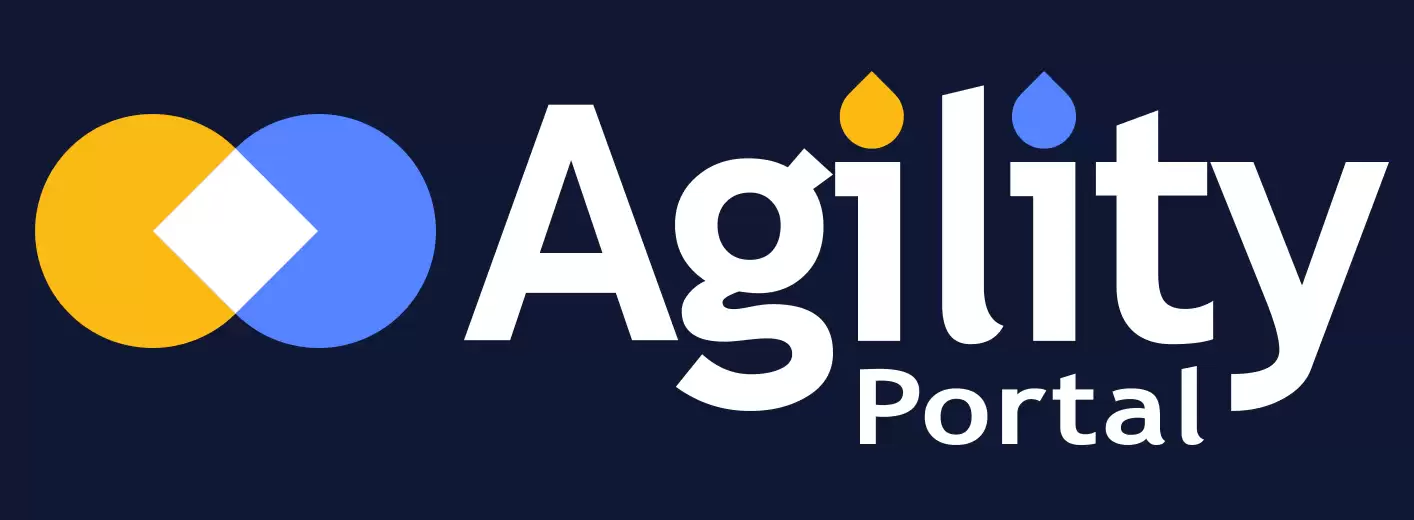Insight Blog
Agility’s perspectives on transforming the employee's experience throughout remote transformation using connected enterprise tools.
14 minutes reading time
(2850 words)
Digital Healthcare and Telehealth App Development for Better Healthcare
Explore how digital healthcare & telehealth app development improve patient care with secure, accessible solutions. Enhance outcomes with cutting-edge technology.
So, you're thinking about building a telemedicine app or hiring a team to do it?
You're not alone. Between HIPAA and GDPR compliance, cross-platform functionality, and safeguarding sensitive patient data, what should be simple (connecting doctors with patients) often feels impossibly complex.
Telehealth app development company build digital platforms that allow healthcare providers to deliver services remotely. These technical solutions expand access to care while maintaining clinical standards.
Building a telemedicine app seems straightforward until you actually start. Most developers dramatically underestimate the challenges of creating a secure, scalable, and user-friendly telehealth solution.
But here's what few admit: the most significant roadblocks aren't technical but tactical. Too many teams waste months (and budgets) reinventing the wheel, overengineering features users don't have, or underestimating compliance requirements until it's too late.
The difference between a stalled project and a successful launch often comes down to recognizing these pitfalls early and knowing which frameworks, tools, and development approaches save time without cutting corners.
In this guide, we'll discuss some critical challenges that derail most telehealth apps, why conventional development methods fall short, and how to leverage existing technologies to build faster while maintaining rigorous security standards.
Forget trial and error—we'll offer some compelling ways to get started.
Read this article: : Top 6 AI-Powered Project Management Tools To Use In 2023
The Transformative Power of Telehealth App Development
Telehealth app development creates digital platforms enabling remote medical consultations, health monitoring, and electronic record access. These solutions are transforming global healthcare delivery, with the market projected to grow from 72billion(2021) to 72billion (2021) to 456 billion by 2030 (Grand View Research). The technology addresses critical care gaps, particularly for rural populations who now experience 3x greater specialist access through virtual visits (NIH).
Adoption rates confirm this seismic shift - 76% of U.S. hospitals now offer telehealth services, up from 35% in 2010. The model demonstrates clear efficiencies, delivering care at 50% lower cost than in-person visits while saving patients 100+ minutes per consultation. Patient preferences reinforce this transition, with 80% indicating they'll continue using telehealth post-pandemic.
Modern intranet platforms integrate advanced features like AI symptom assessment, wearable device connectivity, and instant prescription services. Modern telehealth platforms integrate advanced features like AI symptom assessment, the best AI therapy note tools for automated documentation, wearable device connectivity, and instant prescription services.
These innovations position telehealth not as a temporary alternative, but as a fundamental component of future-ready healthcare systems. The technology's dual impact - expanding access while reducing costs - ensures its permanent role in medical care delivery worldwide.
Online doctor visits aren't just an idea anymore – they're here, and they're changing how people get medical care. This is especially important for people who live far from hospitals or can't easily see specialists.
More and more people are using these virtual care services because the technology has improved and patients want healthcare that's easy to access anytime.
At first, telehealth was just a convenient option. Now, it's something all healthcare providers need to offer. Hospitals and clinics must start using these digital tools, or they'll fall behind. It's not just about competing with other providers – it's what patients now expect as normal healthcare.
While this change brings exciting possibilities, it also creates challenges.
The big question isn't whether to use telehealth (everyone should), but how to do it right – keeping care high-quality and following all the rules. One thing is certain: telehealth isn't going away. It's already changed healthcare forever.
Challenges In Building A Telemedicine Platform
Creating a telemedicine application involves addressing several critical factors that require thorough preparation and technical knowledge. Developers must account for regulatory compliance, system scalability, and budget management. Choosing the right telemedicine app development approach can help simplify these challenges and ensure the platform meets both technical and regulatory standards.
- Regulatory Compliance - Telemedicine applications must adhere to strict healthcare regulations that vary by region. In the U.S., platforms must comply with HIPAA for patient data protection, while European operations need to follow GDPR guidelines. These requirements mandate secure data handling practices, influencing everything from user authentication to data storage methods. Engaging legal experts familiar with healthcare technology early in development helps prevent costly compliance issues later.
- System Scalability - The technical architecture must support fluctuating user demand without service degradation. This requires robust cloud infrastructure, efficient database management, and thorough load testing before launch. Performance planning should account for potential rapid growth in user numbers to maintain consistent service quality.
- Development Costs -Budget planning requires realistic projections for initial development and ongoing operational expenses. Third-party integrations, security measures, and staff training often incur unanticipated costs. A phased development approach with clear milestones helps maintain financial control while ensuring quality standards.
Successful telemedicine platforms balance these technical, legal, and financial considerations while maintaining reliable service delivery. Professional development teams typically incorporate contingency planning for each area to mitigate risks throughout the application lifecycle.
The Role of Telemedicine App Development Companies
The future of digital healthcare depends heavily on telehealth app development firms who lead the development of innovative solutions for the industry.
The development teams help healthcare providers build custom healthcare solutions to address practice requirements for general practitioners and mental health professionals and chronic disease management.
Telehealth platform development expert www.darly.solutions and other solution providers deliver secure and scalable digital healthcare systems that healthcare organizations can use for successful digital service adoption. Such companies deploy cloud solutions combined with AI analytics and blockchain security to develop telehealth systems which stand both reliable and future-proof.
A successful telehealth application requires medical professionals and development teams to work together to develop innovative digital solutions which incorporate medical staff insights about clinical workflows.
When both expertise areas work together they deliver platforms which fulfill medical requirements while providing users an advanced experience.
You may also like: Best Apps for Employees: UPDATED 2022 – A Complete Guide
What to Expect From a Telemedicine App Development Team
Creating a telemedicine application is a complex endeavor that demands meticulous planning, a clear understanding of costs, and careful consideration of critical factors. From seamless video consultations to secure patient records, every aspect must be optimized for efficiency and compliance.
When integrating essential features like real-time transcription and medical note-taking, partnering with your trusted partner for transcription services ensures accuracy, security, and streamlined workflows. With expert support, you can enhance patient care while reducing administrative burdens—making your telemedicine platform both innovative and reliable.
By aligning with the right technology and service providers, you can build a scalable, user-friendly telemedicine solution that meets modern healthcare demands.Here's what to anticipate when embarking on this journey:
1. Selecting a Development Company
Choosing the right development partner is crucial. Consider the following when evaluating potential companies:
- Look for firms with a proven track record in healthcare app development, particularly in telemedicine. Review their portfolio and client testimonials to assess their capabilities.
- Ensure the company is well-versed in healthcare regulations such as HIPAA (Health Insurance Portability and Accountability Act) in the U.S. or GDPR (General Data Protection Regulation) in Europe. Compliance is essential for protecting patient data and avoiding legal issues.
- The platform should be adaptable to your specific needs and scalable to accommodate future growth.
2. Cost Considerations
The cost of developing a telemedicine app varies based on several factors:
- Basic features like user registration, video conferencing, and appointment scheduling may cost between $30,000 and $100,000. Incorporating advanced functionalities such as Electronic Health Record (EHR) integration, AI diagnostics, or remote patient monitoring can escalate costs to $100,000–$300,000 or more.
- A simple design might range from $5,000 to $15,000, while a more sophisticated, custom design crafted by experienced healthcare designers can cost between $15,000 and $50,000.
- Hourly rates vary by region. For instance, North American developers may charge $100–$250 per hour, whereas developers in Asia might charge $20–$50 per hour.
3. Additional Factors to Consider
- Integrating with existing EHR systems, pharmacy APIs, or payment gateways can cost between $5,000 and $25,000, depending on complexity.
- Comprehensive testing to ensure functionality across devices and network conditions may range from $10,000 to $30,000.
- Post-launch maintenance, including updates and bug fixes, typically costs 15–20% of the initial development cost annually.
- Depending on data storage and processing needs, cloud hosting expenses can range from $2,000 to $10,000 per month.
Embarking on telemedicine app development requires a comprehensive understanding of these elements.
By carefully selecting a development partner, budgeting appropriately, and considering all relevant factors, you can create a robust and effective telemedicine platform that meets both provider and patient needs.
Example of Telemedicine App Development in Healthcare
Here are three notable examples of telemedicine app development, showcasing different approaches and specialties:
1. Teladoc Health (Enterprise Solution)
A comprehensive platform connecting patients with board-certified physicians 24/7. The app features:
- Multi-specialty video consultations
- Integration with EHR systems like Epic and Cerner
- AI-powered symptom checker
- Chronic condition management programs
Used by 50+ million members globally, demonstrating large-scale interoperability.
2. Amwell (Provider-Focused Platform)
Developed for health systems to extend their services digitally, featuring:
- Customizable provider workflows
- Specialty-specific consultation templates
- Remote patient monitoring capabilities
- Insurance billing integration
Partners with 150+ health systems including Cleveland Clinic.
3. K Health (AI-First Approach)
Combines AI with physician oversight to offer:
- Symptom assessment chatbot
- Instant access to medical records analysis
- Affordable primary care subscriptions
- Medication management
Processes 2M+ patient interactions monthly using proprietary algorithms.
How Telemedicine Apps Benefit Patients and Healthcare Provides
Lets get into some of the benefits, telemedicine is transforming healthcare delivery by improving accessibility for patients while offering greater flexibility for medical professionals.
By bridging gaps in traditional care models, these digital solutions enhance service quality while reducing systemic strain. Below we examine their key advantages for both user groups.
Patient Benefits
- Enhanced Accessibility - Many individuals face barriers to accessing healthcare, including busy schedules, travel costs, and geographic limitations, especially in remote areas. Telemedicine apps enable patients to consult with healthcare providers from any location using devices like smartphones or computers. This convenience allows medical consultations without physical travel, making healthcare more accessible to a broader population.
- Time Efficiency - Traditional in-person medical visits often involve long wait times and scheduling challenges, sometimes requiring weeks or months to see a specialist. Telemedicine applications alleviate these issues by facilitating virtual consultations, allowing patients to receive timely medical advice, preliminary diagnoses, and health guidance. While not all conditions can be addressed remotely, telemedicine effectively reduces delays for many healthcare needs.
- Consistent Patient Care - Regular interactions between patients and healthcare providers are crucial for effective health management. However, frequent in-person visits can be challenging due to logistical constraints. Telemedicine apps support continuous and consistent care by enabling regular virtual check-ins, ensuring ongoing monitoring and timely interventions, which is particularly beneficial for managing chronic conditions.
- Improved Healthcare Services - By removing traditional barriers, telemedicine applications enhance the quality of healthcare services. Patients can connect with clinicians more readily, leading to better health outcomes and improved quality of life. This increased access fosters healthier lifestyles and more proactive health management, supported by professional medical guidance.
So basically, telemedicine apps play a pivotal role in modern healthcare by making medical services more accessible, reducing patient wait times, promoting consistent care, and enhancing overall health services.
Doctors Benefits
- Schedule Flexibility - Telemedicine gives physicians more significant control over their schedules, allowing them to set appointment times that align with their personal and professional commitments. This flexibility can lead to a healthier work-life balance, reducing burnout and improving job satisfaction. By conducting virtual consultations, doctors can manage their time more effectively, accommodating more patients without the constraints of traditional office hours.
- Optimized Workflow - Beyond facilitating virtual consultations, telemedicine platforms often include features that enhance communication and streamline administrative tasks within healthcare facilities. These applications can capture and securely store patient data, reducing paperwork and minimizing errors. Mental health providers conducting virtual sessions can further optimize their operations by integrating practice management software for therapists that automates session notes, tracks treatment progress, manages insurance claims, and coordinates telehealth appointments within a single dashboard. Additionally, integrated task management tools assist physicians in organizing their duties, prioritizing patient care, and improving overall workflow efficiency. Such optimizations contribute to better resource allocation and a more coordinated healthcare delivery system.
- Reduced Costs and Increased Revenue - Implementing telehealth solutions can lead to significant cost savings for healthcare providers. Physicians can lower overhead expenses by reducing the need for physical office space, equipment, and utilities. These savings can be redirected towards initiatives to attract and retain patients, ultimately increasing revenue. Furthermore, telemedicine enables doctors to see more patients in less time, enhancing productivity and financial performance. Healthcare professionals can also complete continuing education requirements like occupational therapy CEUs online, reducing travel costs and time away from practice. Studies have shown telemedicine can reduce healthcare spending by decreasing unnecessary emergency department visits and hospitalizations.
- Enhanced Patient Engagement - The convenience of telemedicine fosters stronger relationships between patients and healthcare providers. The ability to consult with a physician remotely encourages patients to seek medical advice more promptly and adhere to treatment plans. This increased accessibility allows doctors to spend more time educating patients on self-care and preventive measures, promoting healthier lifestyles. As a result, patients experience a more personalized healthcare journey, leading to higher satisfaction and reduced appointment no-show rates. Improved access to care and convenience associated with telehealth have been linked to increased patient satisfaction.
Telemedicine applications provide healthcare providers with tools to enhance schedule flexibility, optimize workflows, reduce operational costs, and engage patients more effectively.
These advancements contribute to a more efficient and patient-centered healthcare system.
Follow us and access great exclusive content everyday: Follow us on Google News
The Future of Telehealth Applications
Telehealth applications show positive potential for the future because of advancing technology development. People can monitor their health constantly because doctors receive true-time patient vital signs through wearables connected to Internet-connected devices.
Predictive models based on AI in combination with advanced data analytics will improve preventive healthcare by decreasing hospital returns and enhancing patient health outcomes.
The emerging trend in telehealth uses blockchain technology as an innovative storage method which delivers secure medical record security combined with transparency. Patient data stored using blockchain technology becomes more secure because it spreads across multiple servers while also resistant to any unauthorized modifications.
The use of virtual reality (VR) and augmented reality (AR) applications continues to expand as a new trend in telehealth. These technological solutions enable remote healthcare training and provide virtual medical services along with rehabilitative therapy for clinicians and individuals seeking healthcare.
As a result doctors along with patients experience revolutionary interactive health care through these approaches.
The advancing adoption of 5G technologies will increase telehealth services through enhanced network connectivity which produces shorter delays in video call exchange. The precise and dependable nature of real-time remote diagnostics advances because specialists can supply immediate care without limitation of geographic locations.
Wrapping up
The healthcare industry witnesses increasing demand for telehealth applications because providers see the many advantages of virtual care delivery.
Opening a telehealth platform needs complete technical expertise backing medical skills to fulfill regulatory demands alongside offering a user-friendly and secure interactive experience.
Telehealth application development companies run by Darly Solutions emerge as critical components for improving digital health solutions.
Innovations in AI as well as IoT and blockchain and 5G technologies will drive telehealth toward transforming the healthcare environment for the future.
Medical practitioners can build improved care delivery and expanded access through modern technology and thereby develop a modern connected healthcare system.
Frequently asked questions
1. What is a telemedicine platform and how does it work?
A telemedicine platform is a digital system that connects patients with healthcare providers through video consultations, remote monitoring, and secure messaging. These platforms typically include features like EHR integration, appointment scheduling, and prescription management to deliver complete virtual care.
2. What are the key steps in telehealth app development?
Telehealth app development involves:
- Compliance with healthcare regulations (HIPAA, GDPR)
- Building secure video conferencing capabilities
- Integrating IoT devices for remote monitoring
- Creating intuitive patient/provider interfaces
- Rigorous testing for data security and usability
3. What types of telemedicine applications are most effective?
Top-performing applications include:
- Synchronous apps (real-time video visits)
- Asynchronous platforms (store-and-forward diagnostics)
- Remote patient monitoring (RPM) systems
- Hybrid models combining AI triage with live consultations
4. How do telemedicine platforms ensure patient data security?
Reputable platforms use:
- End-to-end encryption (AES-256 standard)
- HIPAA/GDPR-compliant cloud storage
- Multi-factor authentication
- Blockchain-based audit trails (for high-security needs)
5. What's the average cost to develop a telemedicine application?
Costs range from $50,000–$300,000+, depending on:
- Feature complexity (e.g., RPM vs. basic video calls)
- Third-party integrations (EHR, payment gateways)
- Compliance requirements
- Ongoing maintenance needs
6. How can healthcare organizations measure telemedicine platform success?
Track these KPIs:
- Patient adoption rates
- Reduced no-show appointments
- Provider time savings
- Hospital readmission reductions
- ROI from operational cost savings
Categories
Blog
(2588)
Business Management
(318)
Employee Engagement
(204)
Digital Transformation
(172)
Intranets
(119)
Growth
(117)
Remote Work
(61)
Sales
(48)
Collaboration
(37)
Culture
(29)
Project management
(29)
Customer Experience
(26)
Knowledge Management
(21)
Leadership
(20)
Comparisons
(5)
Ready to learn more? 👍
One platform to optimize, manage and track all of your teams. Your new digital workplace is a click away. 🚀
Free for 14 days, no credit card required.















